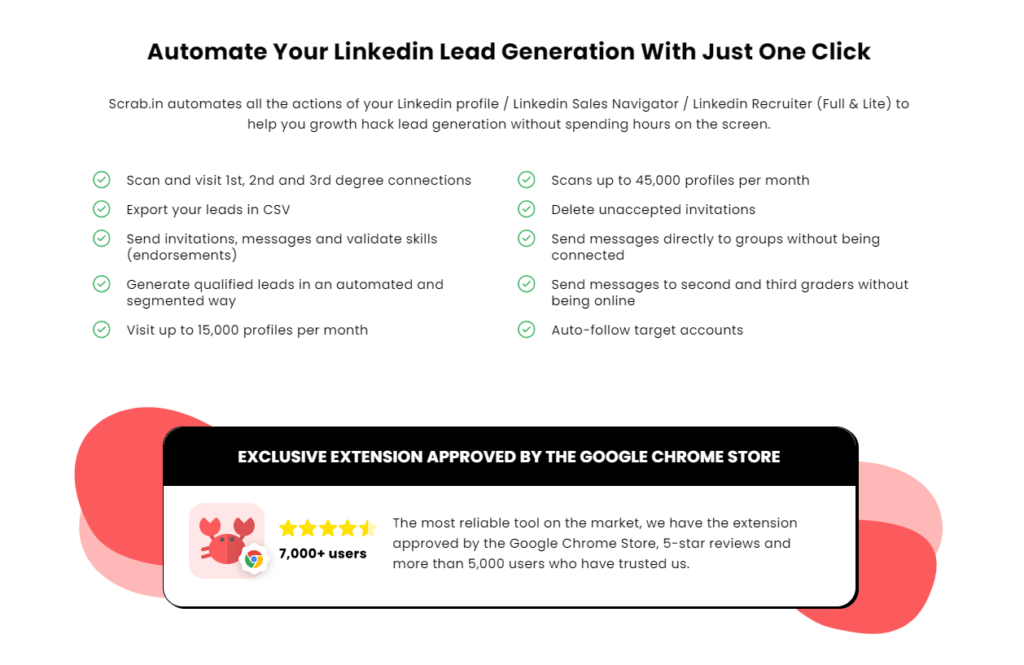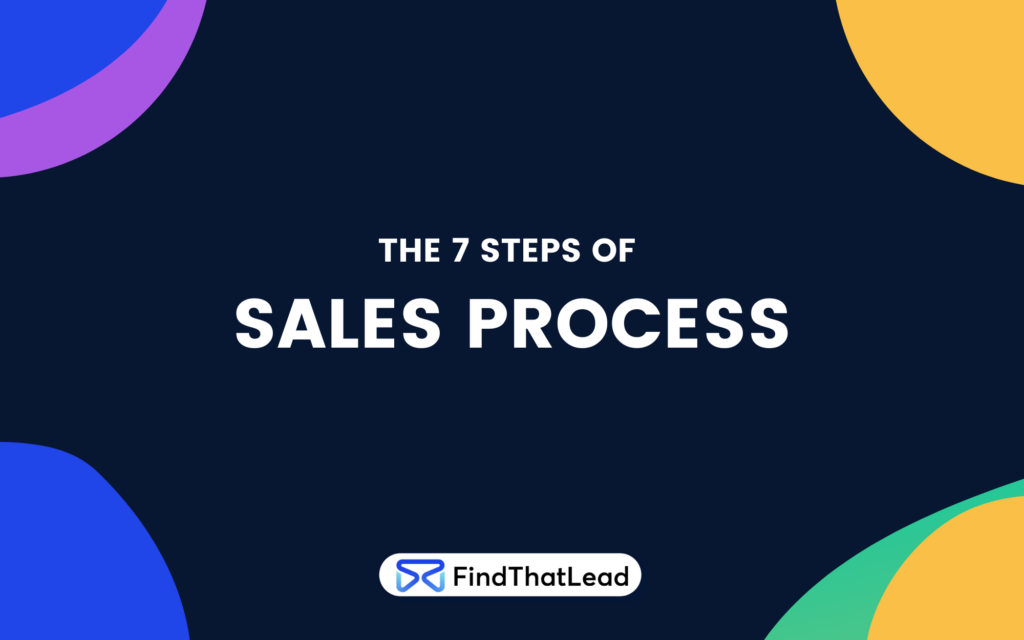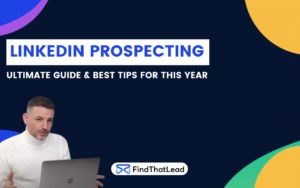Once upon a time, there was a little business that sold handmade soap. They were passionate about what they did and proud of the products they created. But, despite all the hard work, they were struggling to get sales.
They attended trade shows, set up a website, and even offered discounts, but nothing seems to work. That’s when they realized that they were missing an essential piece of the puzzle – a sales process.
The sales process is the roadmap that guides a business from the initial contact with a customer to the final sale and even further. It’s the foundation of a successful business and is critical to closing deals and generating revenue.
Whether you’re selling handmade soap, technology products, or services, a well-designed sales process can make all the difference.
In this post, we’ll explore what a sales process is, why it’s important, and how to create one that works for your business.
By the end of this article, you’ll have a step-by-step guide to help you take your sales to the next level. So, get ready to learn the secrets of the sales process and start closing more deals!
What is the sales process?
A sales process is a set of steps designed to help salespeople convert prospects into customers.
In other words, it’s like a scalable and repeatable instruction manual for sales success.
Although it sounds like an easy task… And it is, but it requires a well-designed and executed sales strategy.
It follows a distinct process and uses a wide range of sales techniques for various buyers and sales situations.
The exact number and names of the stages of your sales process will always depend on your industry, company and sales organization.
However, for the most part, the sales process is usually a 7 stage sales cycle.
Let’s see how well you manage them.
Why selling processes are important?
And if you’ve never developed a sales process and you’re here to find out, stick around, because you’re going to learn how to do one (to perfection).
I am sure you are thinking that I am exaggerating the importance of these sales processes, well, let me tell you that you are wrong. Let me explain it to you, a sales process provides four very interesting benefits:
- Having a more rigid process makes it easier to bring new salespeople up to speed.
- Dividing a sales strategy into stages makes it easier to identify the aspects that are not working and adjust them.
- Having a more structured sales approach will make it impossible to overlook important steps.
- Seeing where customers are in the sales process makes it easier to make more accurate forecasts.
Okay, now you’re seeing more of the light in this sales process thing, right?
When a sales cycle starts and ends?
A sales cycle starts when you contact a potential customer or it is the customer who expresses an interest in your product or service.
This could be through Outbound marketing, web form, Social Media or face-to-face interaction.
The cycle does not end when the sale is either closed or the prospect decides not to move forward with the purchase, the closing of the sales cycle has evolved and expanded beyond the closing, you have to understand that your customer must remain your customer and can be a referral channel.
It’s essential to understand the start and end of the sales cycle as it helps to define the timeline and goals for the sales process. Knowing when a cycle begins and ends allows sales teams to measure their success and identify areas for improvement.
Additionally, tracking the sales cycle can provide valuable insights into the customer’s buying journey and help to optimize the sales process.
What is the difference between a sales process and an inbound sales strategy?
A sales process and an inbound sales strategy are two distinct but related concepts. The sales process outlines the steps a business takes to move a prospect from initial contact to final sale.
An inbound sales strategy, on the other hand, is a customer-centric approach to selling that focuses on attracting and converting prospects through valuable content and personalized experiences. It emphasizes building relationships with potential customers and addressing their needs and pain points.
In other words, a sales process is a set of steps, while an inbound sales strategy is a philosophy and approach to selling. A well-designed inbound sales strategy incorporates a sales process but also takes into account the customer’s journey and provides a more holistic view of the sales process.
Both concepts are important for a successful sales effort, and businesses should strive to align them for optimal results.
What are the 7 stages of a sale in B2B?
You may have heard that there are 5,6,7 or even 8 steps to the sale, but 7 is the most standardized one, you’ll find it easy to understand.
Prospect for leads
The first step is easy to guess, find clients.
Prospecting for leads is the first step in the sales process and is crucial for finding potential customers who are interested in your product or service.
This step involves identifying and researching potential customers, who fit your ideal customer profile (ICP). There are various methods of lead generation, including:
- Cold-calling: This involves reaching out to potential customers over the phone to introduce your product or service and see if they are interested.
- Email outreach: This involves sending an email to potential customers to introduce your product or service and see if they are interested.
- LinkedIn prospecting: This involves using social media platforms such as LinkedIn and Twitter to connect with potential customers and introduce your product or service.
Prospecting for leads is an ongoing process, and it’s important to continuously add new leads to your pipeline in order to ensure the success of your sales process.
If your company is B2B, below is a specific example of a sales process with all its steps, as a Case Study.
Preparing the message for your ICP
Every good salesperson must know his product in depth. Every good salesperson should also know his prospect’s business.
Preparing the message for your Ideal Customer Profile (ICP) is a crucial step in the sales process. The message you craft for your ICP should resonate with their specific pain points, challenges, and needs.
A well-crafted message can make all the difference in whether a lead converts into a customer or not.
To prepare your message, consider the following:
- Research: Gather information on your ICP, including their industry, demographics, and pain points.
- Personalization: Craft a message that speaks directly to the specific needs of your ICP. Use their name and reference their specific challenges.
- Benefits, not features: Highlight the benefits of your product or service, not just its features. Explain how your product or service can solve your ICP’s specific problems.
- Call-to-Action (CTA): Include a clear and concise CTA that encourages your ICP to take the next step.
- Test and refine: Test your message with a small group of your ICP and refine based on their feedback.
A well-crafted message will help you connect with your ICP, build trust, and increase the chances of converting them into customers.
This way, if you do the groundwork and try to understand the potential customer’s pain points before you talk to them, you can offer them solutions.
Identify the ideal approach
Researching the prospect gives you the opportunity to qualify the prospect before you pick up the keyboard. Here are my top tips:
- Connect with the prospect on LinkedIn. Check out their recent activity – what have they commented on, what have they shared, have they written any articles or been featured in any other articles? This kind of information can go a long way in building rapport in your messages (you’re going to feel a little stalkerish, but that’s okay).
- Click through to their company website – have they posted any news or press releases recently? If they have a blog, use it. Look at the language and terms the company uses. Again, all of this information is good information and you can use it in your calls.
- Read the latest news in their industry. Subscribe to industry news websites or LinkedIn groups. When you call the prospect, you’ll want to sound like an expert, right? So reading and more reading is key!
In short, while discovery may take a little time, it will make your messages much more successful.
Now that you’ve done the legwork of the sales process, it’s time to get down to business.
You can choose to send cold emails and thus try to get even closer to the customer, or you can directly make a phone call.
I recommend that you first contact your potential customers through a personalized email so that they don’t get a sudden call from a stranger and at least know of your existence, does that make sense?
Try to use close language and don’t send forty paragraphs, just focus on your target! Oh, and don’t forget a good CTA.
As for the calls, ask them open-ended questions, add some key business terminology, focus on their problems, and determine if you can solve them (please be realistic, if not, don’t force it!).
Contact and Present Your Offer
At this point, you should have a good idea of the problems the potential customer is facing. If so, you will be able to present a proposal that is tailored to solve their problems.
This is where your creativity comes in. The most detailed sales process in the world is no substitute for charisma or charm…. That’s why we tend to avoid detailed scripts.
A good sales pitch should last about 30 seconds. During this time, you will need to demonstrate to the prospect that you have done your research. Highlight the key points of value that are relevant to them. Here are my top tips:
- Cite the types of companies the prospect’s company is targeting: this is a good way to show that you’ve done your research.
- Arouse the prospect’s curiosity: Avoid over-explaining your product or service; you want the prospect to follow up with some questions.
- A sales pitch is not an excuse to list all your wonderful features (we know you’re great but you have to calm down with this…): Potential customers don’t want to hear it. Focus instead on how your product can help them. What results can they expect?
Handling sales objections
A potential customer will rarely be ready to buy immediately after your presentation. Chances are he/she will have some questions that you will have to answer.
When it comes to handling objections, the prospect is never wrong! If you disagree with a prospect’s objection, they will immediately hang up. Instead, listen to what they have to say and restate your offer in a way that answers their question.
Chances are they haven’t heard the right information yet.
Over time, you will develop an arsenal of solutions to objections.
Until then, simply listen to the objection, acknowledge it and propose a reasonable solution. If this goes well, it will be time to close the deal.
Close the Sales process
This stage of the B2B sales process should be the most exciting part for the prospect.
You have demonstrated the value of your product, solved all their objections, and convinced the prospect that your solution is an investment they can’t afford to miss…
Discuss prices and negotiate if necessary. Offering some free value-add to the deal can help get you over the hump.
Also, be sure to discuss all remaining steps before the call ends, including discussing all interested parties who need to sign the agreement.
This will ensure there are no surprises along the way; now the signed contract will be in sight!
Follow-up and Generate referrals
Congratulations! The potential customer has become a customer. There is only one step left.
After waiting for the customer to see the value of your product, it’s worth contacting them one last time. See how they are doing.
Now send the prospect a follow-up email. Due to the number of people typically involved in signing a B2B purchase, it’s important that you leave a good impression.
Be professional and provide next steps. Include a summary or (better yet!) a recording of your conversation, as well as any additional useful information.
If you leave the conversation on a positive note, you’ll leave the door open for repeat and additional sales.
Plus, if you’re going to continue working with the new client, you’ll be off to a good start in your new working relationship.
Example of B2B sales process
Here is an example of sales process in an outbound marketing context, we will use the case study of “Growth Agency”, a B2B Lead Generation Agency
1. Lead Generation
Growth Agency chose two main acquisition channels, Cold Emailing and LinkedIn Prospecting and using FindThatLead & Scrab.in as main tools for each channel.
Cold emailing:
Growth Agency uses FindThatLead as a Prospecting and cold email automation tool, “Prospector” let them generate a list of their potential customer emails and “Send Emails” allows them to set up a Cold Emailing Campaign.

LinkedIn Prospecting:
60% of customer flow comes from this channel, Growth Agency uses Scrab.in in several LinkedIn accounts to automate prospecting and lead generation from this channel, it is an optimal channel because it allows advanced segmentation and it is much easier to get responses in its outreach.

2. Preparing the message for your ICP
Growth Agency has a structure created for all its messages. Remember that it is simply a structure and not a template.
- Greeting — // Examples: How are you, (name), Hey, (name)
- Context — Mention something that connects you to the person
- Ask about the problem — Ask how they are dealing with the pain point they are likely to have.
- Incising the problem — You can mention something negative that will make the lead feel the pain even more strongly and want to solve their problem
- The solution — Say what you would do to solve that problem from your own perspective, with the mission of generating value for the prospect and getting them interested in talking to you.
- Social proof — We have helped companies like yours (if you can name them, all the better) to increase their sales by X%…
- CTA with a question — CTA with a defined next step // Example: How’s your schedule for a meeting tomorrow at 10:00? Virtual coffee while we talk about it? etc.
3. Identify the ideal approach
The industry you work with is constantly changing and they use newsletters and news to stay up to date. It is always crucial to know the pain points of their market.
4. Contact and Present Your Offer
Cold email example:
“Hey Ronald!
I came across your LinkedIn profile and noticed that we share a common interest in SaaS. I understand the challenges of getting new clients (especially in the beginning), and you might be struggling with it.
I’ve helped companies like yours to improve their income by, at least, 70%. And I’d like to share with you a few strategies we use.
How’s your schedule for a meeting tomorrow at 10:00?
Best,”
5. Handling sales objections
In this stage of a sale, the purpose of the first contact is never to close a sale, it is simply to create a relationship and take advantage of the conversation to address the problem and resolve objections. When it comes to handling and overcoming sales objections, the prospect is never wrong!
6. Close the Sales process
Once the lead is qualified, it is time to close a first or second meet where, besides giving value, we must close a sale or at least a deal, all within a call or on Google Meets.
7. Follow up and Generate referrals
Being an agency model, it is crucial to always maintain communication with your clients (at least once a week), and even your ex-clients.
Growth Agency also uses a referral system that allows you to boost your client’s word of mouth in exchange for a monetary reward.
Best practices for creating a sales process steps
Creating a sales process can be a daunting task, but with the right approach, it can be a game-changer for your business. Here are some best practices to keep in mind when creating your sales process steps:
- Keep it simple: A sales process should be easy to understand and follow, so keep the number of steps limited and clearly defined.
- Personalize it: Every business is unique, so your sales process should reflect your specific products, services, and customer needs.
- Test and refine: Regularly test your sales process and make changes based on the results. This will help you continuously improve and stay ahead of the competition.
- Focus on the customer: The sales process should always be centered around the needs and goals of the customer.
- Make it measurable: A sales process is only effective if you can measure its success. Use metrics such as conversion rates and time-to-close to track the effectiveness of your process.
- Get buy-in from your team: Ensure that your sales team is on board with the sales process and understands its importance. Provide training and support to help them succeed.
- Continuously improve: The sales process is never done. Regularly review and improve your process to stay ahead of the competition and meet the changing needs of your customers.
By following these best practices, you’ll be well on your way to creating a sales process that drives results and takes your business to the next level.
How to improve your steps in the selling process?
Here are some tips to improve sales performance:
- Personalize customer communications. Use technology to help you personalize at scale and find leads more easily.
- Never skimp on ongoing salesperson training. B2B buyers are savvy, preferring to hire professionals who demonstrate experience and empathy.
- Establish a genuine relationship by actively listening, thinking critically and asking the right questions. Go for omnichannel outreach (mobile, social media, email, events, sales calls, etc.).
- Consider establishing a sales operations team and a sales enablement team.
- Establish full strategic and tactical alignment between all units that engage with the customer, from marketing and sales to customer success.
In conclusion, the sales process is an integral part of any successful business. By understanding the steps and stages of a sale, you can create a process that works for you and your team. Whether you’re selling B2B or B2C, a well-defined sales process can help you close more deals, build stronger relationships with your customers, and drive growth for your business.
Remember that the sales process is a journey, not a destination. It’s important to continually evaluate and improve your process to ensure it remains effective and relevant. Whether you’re looking to improve your lead generation, increase your close rate, or simply provide a better experience for your customers, a well-designed sales process can help you achieve your goals.
So, take the time to invest in your sales process, and watch as your business grows and prospers. With the right steps and a little bit of effort, you can create a sales process that delivers results and sets you up for success in 2023 and beyond.







 BONUS:
BONUS: The Challenge: Join this free course and I guarantee that after 5 days you will have the necessary skills to start generating B2B clients Growth Hacking and Prospecting techniques.
The Challenge: Join this free course and I guarantee that after 5 days you will have the necessary skills to start generating B2B clients Growth Hacking and Prospecting techniques.